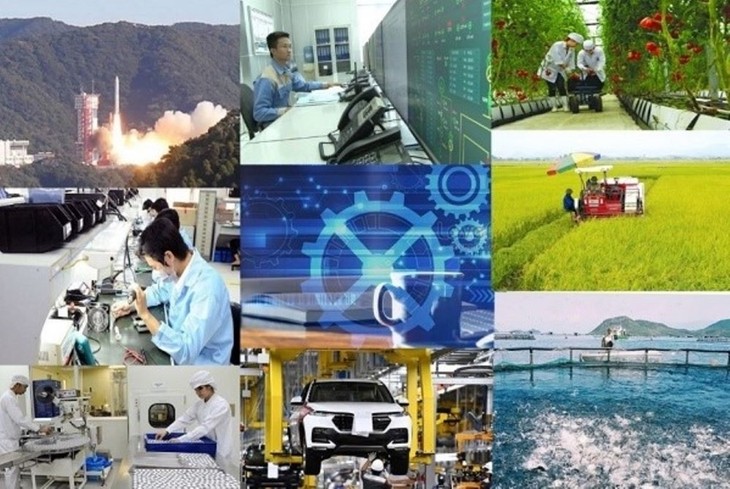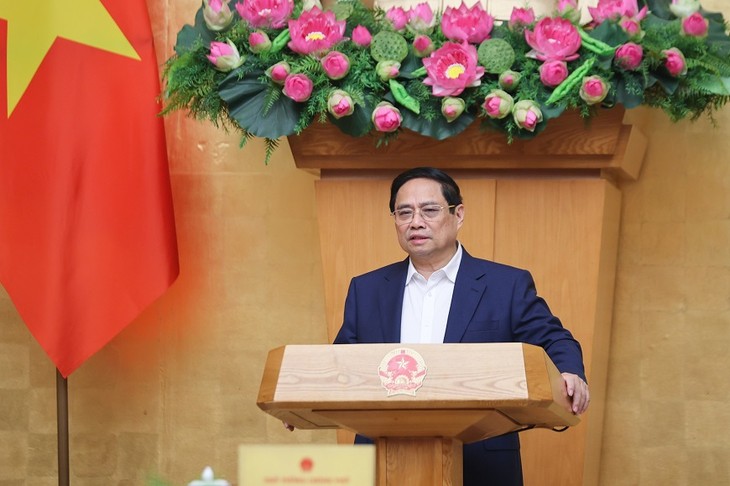(VOVWORLD) - After six months implementing Politburo Resolution 57 on the breakthrough development of science, technology, innovation, and national digital transformation, Vietnam has seen clear shifts in awareness and action across the political system. A strong spirit of reform has emerged, with institutional bottlenecks beginning to ease and digital infrastructure advancing.
 (Illustrative photo: vista.gov.vn) (Illustrative photo: vista.gov.vn) |
Resolution 57 is strategically important as lays the groundwork for Vietnam’s rapid and sustainable development in the new era. It came amid Vietnam striving to fulfill the goals set for the current term and beginning a two-tier local government model in 34 provinces and cities from July 1, 2025.
Legal foundation
A key factor in the effective implementation of Resolution 57 has been a bold shift in mindset and strong leadership. In early June, the Central Steering Committee for the Development of Science, Technology, Innovation, and Digital Transformation launched two major plans: Plan 1 on strategic action to implement Resolution 57 and Plan 2 on promoting coordinated, fast, efficient digital transformation to support the restructuring of the political apparatus.
These plans represent a new, visionary approach, translating practical directives into concrete actions. Plan 2 introduces an entirely new governance model that integrates all tasks into an electronic management system, enabling commune-level authorities to report directly, allowing the Steering Committee to monitor and inspect independently and facilitating real-time management at the provincial level.
The National Assembly has passed two important laws – the Law on Science, Technology, and Innovation and the Law on the Digital Technology Industry.
The government has issued several critical legal documents, including 16 decrees and one resolution on administrative reform through single-window and interconnected procedures and decentralization aligned with the two-tier local government structure. The government has also issued a list of strategic technologies, identifying 11 key technology groups crucial for rapid, sustainable development and enhancing national competitiveness. The selection aligns with Vietnam's research, development, and application capabilities and reflects its strategic vision.
 Prime Minister Pham Minh Chinh chairs the regular Government meeting on June 4, 2025. (Photo: VGP/Nhat Bac) Prime Minister Pham Minh Chinh chairs the regular Government meeting on June 4, 2025. (Photo: VGP/Nhat Bac) |
At the Government’s regular meeting on June 4, Prime Minister Pham Minh Chinh affirmed the allocation of at least 3% of the national budget for science and technology. In March, the Prime Minister had announced a planned allocation of roughly 441 million USD from surplus revenues and savings to support science, technology, innovation, and digital transformation. The government also intends to mobilize other sources, such as bond issuance and capital reallocation, to implement Resolution 57. By late May, the banking sector had introduced a 2.2 billion USD credit package from 21 banks, offering interest rates of 1% or less for digital and infrastructure projects.
Tangible achievements
In the first half of 2025, systems were launched for monitoring and evaluating and for receiving and processing feedback and proposals on scientific, technological, and digital transformation initiatives, creating a link between systems and forming a governance model based on real-time data.
The ecosystem for science, technology, and innovation has flourished, with 858 sci-tech enterprises, 45 high-tech enterprises, and more than 73,000 digital technology firms currently operating. Resolution 57 has resonated in the business community, creating a widespread movement that is generating resources and momentum for implementation.
At the groundbreaking ceremony for the CMC Creative Space Complex in Hanoi on June 1, Prime Minister Pham Minh Chinh said: “We must set higher national development goals, foster bold, creative ideas in scientific research, and accelerate innovation and digital transformation. Efforts must be made to develop infrastructure for the economy, science and technology, digital networks, green systems, and climate resilience, and support institutional development, human resource training, governance innovation, and national progress.”
Science and technology development, innovation, and digital transformation are critical drivers of national development. Achievements in the first six months of implementing Resolution 57 reflect the collective innovative spirit of the entire political system and the support of the people.
In the second half of the year, Vietnam will focus on digital transformation within the two-tier administrative model. It will inaugurate and operate the National Data Center, strengthen data integration and sharing across databases and information systems. Ministries and localities will continue to roll out digital infrastructure and 5G coverage nationwide while advancing satellite internet to meet the needs of national digital transformation.